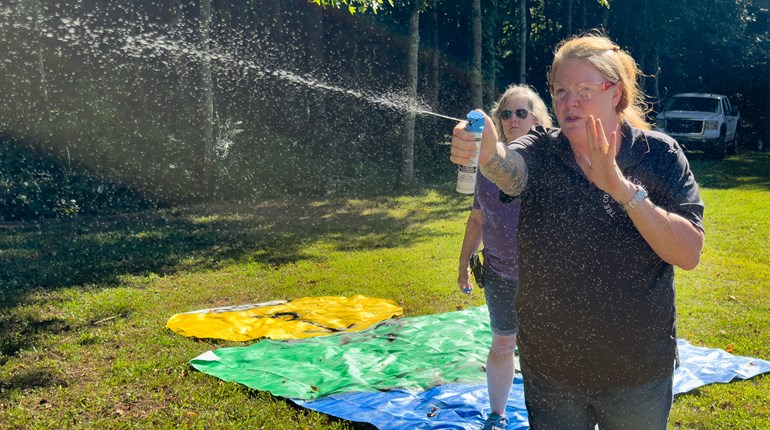
Did you know that elite-level sprinters train about 20 hours per week? That means an average of more than 1,000 hours per year. In addition to practicing on the track to measure speed, they add in plyometrics and high-velocity strength training to increase their force production. Sprinters spend time developing their quadriceps (thigh muscles) and gluteal muscles (hind quarters) because these muscles are two of the most important muscles used to generate force to propel your body forward. They are used to set you up for a successful “sprint start” technique which is specifically designed to ensure your first step is explosive.
I teach several online classes and one of them is called “Reactionary Zones.” This three-hour class focuses on pairing the decision process with the lack of time while managing space. A very common answer to the question of “What would you do if a threat was less than 12 feet from you?” is “Well, I would just run away.” If you are like me, not a trained high-level sprinter that practices explosive starts, then that is probably not the best answer, because you may not have time to respond.
Think Fast. Think Really Fast.
First, let’s talk about how quick the “bad person” can cover the distance of 12 feet. According to Dennis Tueller, an average healthy adult male that is running with a contact weapon in hand can cover 21 feet in about 1.5 seconds. I am not a mathematician, but I believe it is fair to say that a highly motivated person can cover 12 feet in under one second.
What does 12 feet look like? The average length of a twin size mattress is 6 feet so I want you to picture two twin size mattresses end to end. The average length of an arm is 3 feet and the average length of a stride is 3 feet. That means an average adult male can move forward 3 strides and reach out to touch you in under 1 second.
Now, let’s talk about you. Can you sprint? Are you physically capable? How old are you? Do you have any injuries? What shoes do you typically wear? Are you usually alone or are you responsible for others? When was the last time you practiced sprinting and measured your performance? The answers to these questions play a big part if you make the statement “in less than 12 feet, I will just run away if I am threatened.”

Lastly, Force Science Institute has published an article on the speed of response times from police officers when presented with making decisions under 12 feet. Their studies are based on simple and complex responses. That means making one simple decision versus complex decisions with different variables. Obviously, there are millions of scenarios that range from simple to complex, so I am going to just “bullet point” some facts.
- Simple Response: When they knew the stimulus to “act” was coming, it took .25 seconds to recognize that they needed to do something.
- Complex Response: When they knew the stimulus to “act” was coming, it took .56 seconds to recognize they needed to do something. That is double the simple decision response time.
- Simple Response: When they didn’t know the stimulus to “act” is coming, it took .83 seconds to recognize they needed to do something.
- Complex Response: It was easily DOUBLE the time when they didn’t know the stimulus to “act” was coming. Let’s put that number at 1.66 seconds as a generous time that a professional has to respond. To be fair, the 1.66 seconds was on their BEST day.
Now we are down to a group of important questions that you need to ask yourself. In less than 1 second, can you see the threat and grasp that it is happening? Do you recognize the distance between you and the threat, can you quickly filter through your options, and are you able to make a decision and then instantly act on it? If the answer is “not yet,” then please consider paying extra attention to what/who is around you, have a pre-plan of action, and do everything in your power to see the potential threat as far away as possible so you have the opportunity to sprint to safety.



































